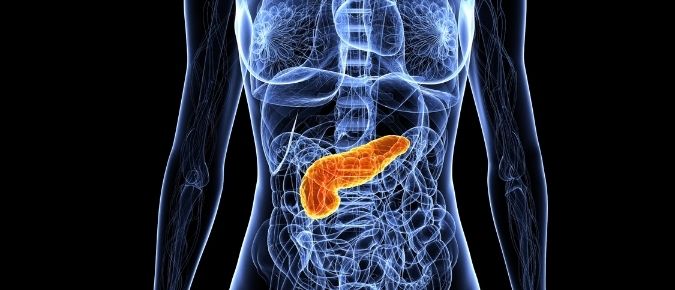
November marks Pancreatic Cancer Awareness Month. In recognition of this month, here are six things you should know about pancreatic cancer.
1. What is pancreatic cancer?
Pancreatic cancer is cancer that starts in any part of the pancreas. About 70% of pancreatic cancers are found in the head of the pancreas.
Pancreatic cancer can spread to nearby lymph nodes and to the lining of the abdomen (peritoneum). Cancer cells may also travel through the bloodstream to other parts of the body, such as the liver.
2. Who gets pancreatic cancer?
About 4260 Australians are diagnosed with pancreatic cancer each year. More than 80% are over the age of 60.
Pancreatic cancer was estimated to be the eighth most common cancer in Australia in 2021. A person has a 1 in 69 chance of being diagnosed with pancreatic cancer by the age of 85.
3. Types of pancreatic cancer
There are two main types of pancreatic cancer.
- Exocrine tumours: These make up more than 95% of pancreatic cancers. The most common type is adenocarcinoma which begins in the lining of the pancreatic duct.
- Pancreatic neuroendocrine tumours (NETs): These make up about 5% of all pancreatic tumours and can occur in any part of the pancreas.
4. Risk factors for pancreatic cancer
Risk factors that can increase a person’s chances of developing pancreatic cancer include:
- smoking tobacco (smokers are about twice as likely to develop pancreatic cancer as nonsmokers)
- obesity
- ageing
- eating too much red and processed meat
- drinking too much alcohol
- long-term diabetes (but diabetes can also be caused by the pancreatic cancer)
- long-term pancreatitis (inflammation of the pancreas)
- certain types of cysts in the pancreatic duct known as intraductal papillary mucinous neoplasms (IPMNs) – these should be assessed by an appropriate specialist
- stomach infections caused by the Helicobacter pylori bacteria (which can also cause stomach ulcers)
- family history and inherited conditions
- workplace exposure to certain pesticides, dyes or chemicals.
Having risk factors does not mean you will definitely get cancer, but talk to your doctor if you are concerned. Some people with pancreatic cancer have no known risk factors.
Screening tests help detect cancer in people who do not have any symptoms. Although there are useful screening tests for certain types of cancer, such as breast cancer and bowel cancer, there is currently no screening test available for pancreatic cancer.
5. Symptoms of pancreatic cancer
In its early stages, pancreatic cancer rarely causes symptoms. Symptoms may not appear until the cancer is large enough to affect nearby organs or has spread.
Common symptoms are:
- appetite loss
- nausea with or without vomiting
- unexplained weight loss
- pain in the upper abdomen, side or back, which may cause you to wake up at night
- changed bowel motions – including diarrhoea, severe constipation, or pale, oily, foul-smelling stools (poo) that are difficult to flush away
- newly diagnosed diabetes
- fatigue (feeling very tired).
Some pancreatic NETs will also cause symptoms such as blurred vision, too much sugar in the blood or a drop in blood sugar, excessive thirst, increased urination and reflux.
These symptoms can also occur in other conditions so speak to your doctor if you have any of these symptoms.
Learn more about pancreatic cancer symptoms.
6. Diagnosing pancreatic cancer
Tests to diagnose pancreatic cancer may include blood tests, imaging scans, and tissue sampling (biopsy).
The tests you have will depend on the symptoms, type and stage of pancreatic cancer. Test results will show what type of pancreatic cancer it is, where in the pancreas it is, and whether it has spread outside the pancreas.
Learn more about diagnosing pancreatic cancer.








